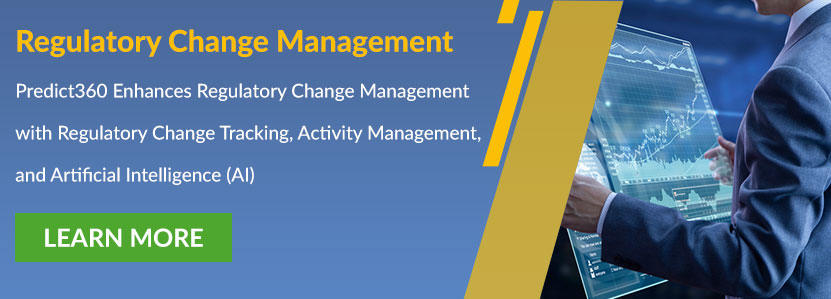Home/ Blog / How Regtech Simplifies Implementation of Regulatory Change Management Plans
Our previous two blogs have dealt with the first two steps of the regulatory change management process – understanding the upcoming regulatory updates and formulating a plan to implement the changes required to be compliant with the new regulatory framework. However, as said, “No plan survives first contact with the enemy”. In the context of risk and compliance, this adage can be rephrased as no plan survives the first delay; once a component of the process starts lagging behind, all the things dependent on it are at risk too. Regtech can help businesses ensure that the plans they create are executed successfully.
Lack of Visibility
A proactive team can easily shepherd the organization into successfully implementing regulatory and compliance action plans by intervening when they see a problem. The problem is that the team traditionally does not have any visibility into the actions being carried out. The regulatory experts in the organization are responsible for enterprise-wide changes but cannot monitor enterprise-wide regulatory change management activities. They rely on reporting provided by the different departments of the organization. This means that there is always a risk that someone else may not report something correctly.

The Regtech Difference
Regtech makes managing action plans more efficient and reliable. The most foundational change is that the plan exists as an automated workflow. When the plan is being managed manually, the regulatory experts and the risk and compliance teams must maintain spreadsheets to track the different actions being taken. They must also keep a close watch on the progress to ensure that they can intervene if another department is struggling to complete a training or an implementation in mean time.
Regtech platforms provide an activity management system where the risk and compliance teams can assign activities to stakeholders throughout the organization. Those stakeholders take details from the platform and then provide updates on the same platform. This gives the risk and compliance teams a bird’s eye view of the regulatory change management activities across the enterprise. They can create dashboards and charts that update in real time. These charts and dashboards help them detect any problems or delays and fix the issues before they negatively impact the overall plan.
Risk prediction and detection functionality will give businesses the insights they need to put in risk mitigation plans in place as new risks emerge. Click To TweetBoard Level Views
Regtech also changes the way board members interact with regulatory change management plans. Without Regtech the board is dependent on reports submitted to them by regulatory change management. This means that they rely on regular updates and cannot proactively manage the regulatory change management plan. Regtech provides management with executive dashboards that show task progression in real-time. Instead of relying on manual reports, they are empowered to steer things in the right direction whenever needed.
This also changes the way regulatory change action plans progress in an organization. When everyone knows that the board is monitoring progress in real-time, there is increased ownership of all activities. Everything is laid out transparently in a Regtech platform. If there is a delay or an issue the board does not need to do an investigation or inquire about who is responsible for it – they can simply look at the RCM (Regulatory Change Management) platform and discover the issues by themselves. This also reduces stress for employees. If the employees make a mistake without there being an RCM platform in place, the mistake is often discovered quite late and causes a lot of issues for the overall plan implementation. RCM platforms can instantly detect issues, allowing management to fix them before they can cause long-term damage to the organization.
Compliance Monitoring and Risk Predictions
There are two essential functions that Regtech delivers which businesses will find very useful as they navigate the regulatory framework in 2021 – compliance monitoring and risk predictions. Compliance monitoring allows businesses to quickly catch compliance violations. Regulatory updates often increase employee errors because it takes time to get used to new rules and regulations. Compliance monitoring helps businesses test their controls proactively and ensures that the compliance framework is working efficiently and is strong enough to detect compliance issues and mitigate them before they cause any severe damage.
Regtech also helps businesses detect emerging risks, which is an essential tool in 2021. There are major regulatory updates expected in 2021 and introduce new risks into the market. Risk prediction and detection functionality will give businesses the insights they need to put in risk mitigation plans in place as new risks emerge.
These features make Regtech an essential tool for businesses that want to improve the way they manage regulatory changes. Interested in discovering how your business can benefit from Regtech? Get in touch with our regulatory experts for a demonstration of the Predict360 Regulatory Management and Intelligence solutions.
Request a Demo
Complete the form below and our business team will be in touch to schedule a product demo.
By clicking ‘SUBMIT’ you agree to our Privacy Policy.




